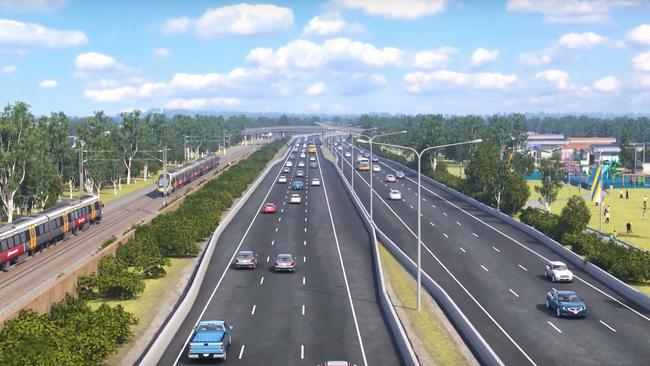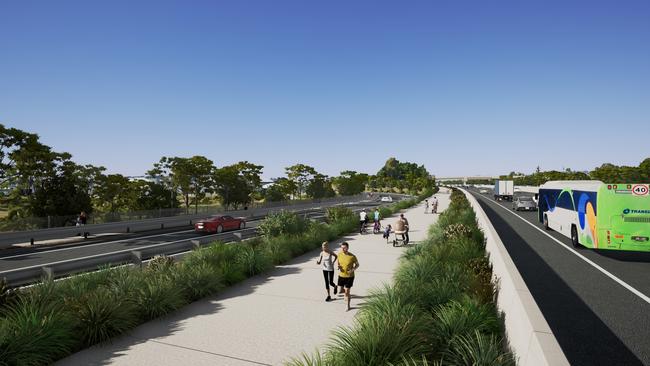Coomera Connector will lead to traffic jam, transport data shows
The arterial roads which will link with the new Coomera Connector in the city’s north are the worst on the Gold Coast for congestion, according to new data.
Gold Coast
Don't miss out on the headlines from Gold Coast. Followed categories will be added to My News.
CARS will be on the Coomera Connector in the city’s north “from mid-2024” and it cannot come quick enough for motorists tortured by increasing congested arterial roads.
New council mapping shows average daily traffic on key Pimpama roads is up by 23 per cent, and double for freight vehicles on Helensvale connector streets.

The data, which looks at comparisons for the post-COVID recovery period and baseline results for 2018 and 2019, recorded the following increases in average daily traffic: Mirambeena Dve, Pimpama, up 23 per cent; Foxwell Rd, Coomera, 16 per cent; Helensvale Rd, Helensvale, 11 per cent; Pimpama-Jacobs Well Rd, Jacobs Well, 9 per cent; Rio Vista Blvd, Broadbeach, 9 per cent; Thomas Dve, Chevron Island, 7 per cent; Yawalpah Rd, Pimpama, 5 per cent.
The biggest increase for heavy vehicles was Helensvale Rd, up 105 per cent.
Based on 2018 data, freight on Foxwell Rd was up 46 per cent.
Main Roads senior bureaucrats told councillors at a briefing that M1 traffic had returned to pre-COVID levels with 230,000 vehicles using the highway on peak days.

Transport planners are investigating key connection points for the Coomera Connector between Oakey Creek and Nerang-Broadbeach roads, with one solution being Shipper Dve linking up with Foxwell Rd in the north.
TMR has ruled out linking the Connector to Hope Island Rd, instead opting for Helensvale Rd but not yet deciding whether dual laning was within the scope of the project.
Councillors suggest council’s latest data shows why Helensvale Rd must be upgraded with more lanes and signalling, and much of that work will require state funds.

Transport and Main Roads director-general Neil Scales told an Estimates hearing in parliament on Friday that cars would be on the second M1 “in stages from 2024”.
Construction should begin on the road in mid-2021.
The state government will spend $12.9m this financial year on preparation work, focusing on the Coomera and Nerang river crossings.

The Bulletin has obtained photographs showing drilling work has been completed near the crossings. The latest briefings from Main Roads outlines how a business case will be ready by mid-next year.
A further $115m will be allocated for the 2021-22 budget and $650m for the 2022-23 and 2023-24 budgets.
Mr Scales revealed the government plans to open the road in three separate stages.
“Stage 1 North is Shipper Dve, Coomera to Helensvale Rd, Helensvale,” he said.
“Stage 1 Central is Helensvale Rd, Helensvale to Smith St Motorway, Molendinar, and Stage 1 South is Smith St Motorway, Molendinar to Nerang-Broadbeach Rd in Nerang.”
Earlier in the day, Transport Minister Mark Bailey took aim at what he called the LNP’s “puny” second M1 plan.
“(The second M1) is very important, because the northern Gold Coast is a very high population growth area and we need people to get to where their services and jobs are, which predominantly is on the Gold Coast,” he said.


